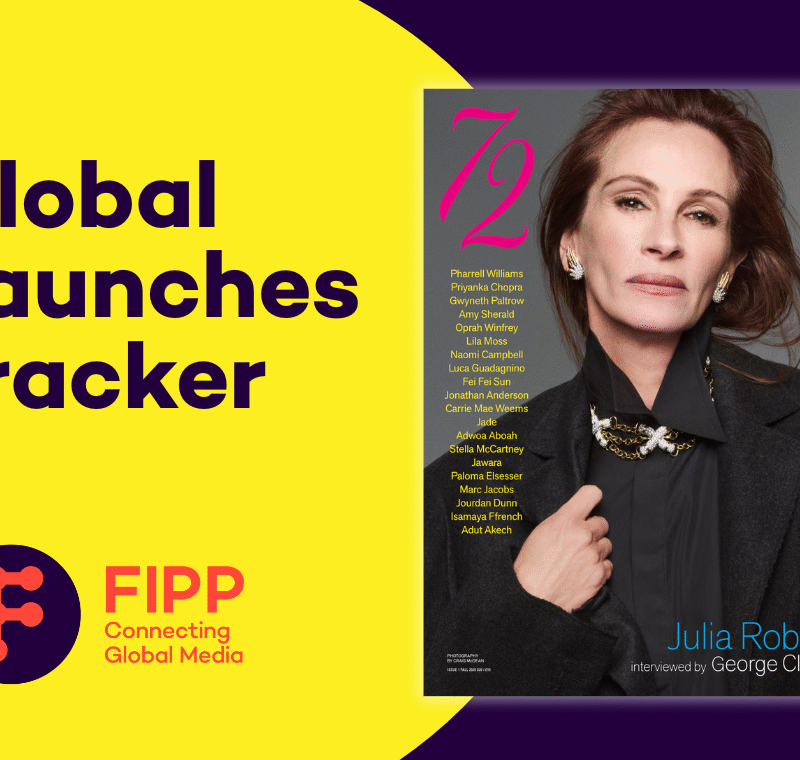As print is being demonised, it’s time to pull together
This article is written by Piet van Niekerk and Pierre de Villiers.

Before the Covid-19 pandemic tore into the publishing industry, a vast number of magazines were being distributed in hotels, airports, on board aircraft, in stations and trains, salons and doctors’ waiting rooms, spas and corporate offices around the world. While classified as single copy subscriptions, the value of having a magazine in areas where there is a captive audience is extremely high. In fact, for some publishers, especially non-retail, these environments represent more than 50 per cent of distribution.
But misconceptions about printed products and their ability to spread Covid-19 have changed all of this, says representatives of the distribution and inflight magazine industry. Despite the fact that there’s never been a documented incident whereby the virus has been transmitted from a print newspaper or print magazine – and tests showing Covid-19 disappears from substrate paper within three hours, making it one of the safest products – publications have been removed on mass from planes, hotel lobbies, salons and doctors’ waiting rooms.
Print wrongly demonised
While printed titles are wrongly being demonised as a coronavirus threat in this way, the publishing industry faces an existential crisis, even post-Covid, according to those who work in distribution and inflight magazines.
Chris Horn, managing director at Gold Key Media, press distributor to the leisure, travel and corporate sectors, warns that many publishers are probably not aware of the severity of this threat at this stage.
“It’s only when businesses reopen that the true damage to the sector will be revealed,” he warned.
“Many businesses suspended their orders with us back in March and agreed to re-commence supplies when they re-opened. However, since the publication of UK government advice many venues have now cancelled their orders permanently because in some settings they are being advised by an overly cautious government that print poses the threat of passing on coronavirus to consumers.”
Horn says the government advice is “totally misleading and contradictory” to the advice the government was giving several weeks ago telling consumers to buy and read newspapers. “Westminster Council are now also advising all premises to not have magazines, newspapers, leaflets etc. in their buildings too. This not only impacts on hospitality, it affects all businesses.”
Download FIPP Insight Report
[June 2020 update] Publishing during a pandemic: Emerging from the Covid-19 crisis
Turning the page in hospitals
He says since the Covid crisis began, they have diverted their distribution of print to 50 hospitals across the UK supplying NHS workers directly with newspapers and magazines donated by publishers. “There is no fear of print or hysteria in these hospitals, just common sense being applied by hard working people.”
 |
UK’s National Health Service (NHS) workers read print magazines and newspapers donated by Gold Key Media. Photo: Gold Key Media
Jason Mengers, Managing Director of DLT Media, a distributor of consumer magazines into B2B networks, says part of the problem is that there’s an inconsistency in the messages being put out by industry bodies and governments in various countries around the world.
“With operations in both the UK and the Holland, Mengers was able to reference the work of the Magazine Media Association (MMA) in The Netherlands. The MMA represents all Dutch magazine publishers. They worked directly with Public Health Holland to immediately quash the rumours that magazines need to be removed from business environments such as hotels, salons and medical waiting areas as part of their Covid-19 reopening strategy.”
In fact, after intervention from the MMA, Public Health Holland released the following statement: “We read protocols from various industry organisations that draw up their own protocols. We are not aware of any active advice to remove magazines. We advise on modifications to the protocols that are in line with our… guidelines.”
Mengers says that this outcome in Holland supports the scientific evidence that there doesn’t need to be such a focus on magazines to fight the virus. Today, magazines continue to be allowed in salons, waiting rooms and hotels in The Netherlands without any detrimental effect. Yet, in the UK businesses remain under the impression that they need to remove magazines in order to open safely. “The simple fact is that magazines are far less of a risk as a single touch point compared as countertops or payment machines etc…”

UK’s National Health Service (NHS) workers read print magazines and newspapers donated by Gold Key Media. Photo: Gold Key Media
Failing to follow the science
On 23 June the UK Government published online “secure Covid-19 guidance for employers, employees and the self employed” titled: ‘Keeping workers and clients safe during Covid-19 in close contact services’. On page 27 of this report it states that one of the ways employees can keep workspaces clean could be by “clearing workspaces and removing waste and belongings from the work area at the end of a shift, including not providing reading materials such as magazines in client waiting areas”.
Magazine distribution representatives have criticised this advice for not only being unscientific but also because this recommendation is being used as grounds for many industry bodies advising businesses to dump their magazines.
Says Mengers: “We are getting inundated with requests to cancel magazines because the government advice is constituted as a clear directive for all businesses that they must follow and that in their mind is a good enough reason that they can exit a supply contract in the future.”
One industry body who took immediate steps to eradicate magazines from waiting and working areas is the UK Spa Association. Since the government advisory, it recommended to all members in their “reopening guidelines” to “remove all soft furnishings and objects such as magazines, reading materials, throws, blankets etc”.
Mengers says “this has potential for long-lasting damage to the industry and it may take many months to see the true scale of this. Businesses don’t cancel contracts and when the pandemic is over return to business as usual. Once they are in a new pattern that excludes magazines they will be very hard to re-introduce and it will be extremely detrimental to the publishing industry.”
FIPP World Media Congress 20202-30 September 2020 | Online 
A unique opportunity to learn from and network with the world’s leading media executives. Join us from anywhere in the world. See the list of speakers so far confirmed | fippcongress.com |
Inflight magazines – perception versus reality
The inflight sector might be hardest hit, warns Horn. “Some high quality inflight titles that I know of have been suspended indefinitely.”
With airlines increasingly taking off again, getting the message out that printed titles pose a minimal risk to passengers is certainly crucial for publishers like Ink Global, who creates magazines for a large stable of aviation clients including American Airlines, easyJet, Ethiopian Airlines, United Airlines and Virgin Atlantic.
“The lack of understanding has created a real sense of fear,” says Jonny Clark, Director of Business Development at Ink, who, at the start of the outbreak, commissioned a white paper that explores the scientific evidence of how long the virus can survive on paper.
“This is a classic case of perception versus reality. Now that science is providing clear and tangible approaches to battling the virus, governments should be working harder with the media to get the right message across.”
Ink has been proactive during the lockdown to try and get the right, well-informed message out into the public sphere.
“We are already in conversations with other content marketing companies and IATA on the correct messaging coming out of lockdown,” says Clark. “In fact, IATA have come to us directly to get the message about hygiene and safety in these very publications. And we’ve already written to the UK government about removing vague statements that aren’t based on scientific research.”
Digital has a long way to go
Clark says Ink does not believe the impact of Covid-19 will lead to the end of the inflight magazine, with many of its titles taking to the skies again.
“While the airline industry is one of the last bastions of a truly captive environment, digital products still have a long way to go to get to the engagement levels that the simple analogue magazine product affords,” he points out. “The tactility of magazines cannot be replaced. The magazines are there to be taken and enjoyed at home or by the pool, and acts as a personal gift from the airline. In fact, GPS and Harris Poll research shows that inflight magazines still achieve 88 per cent engagement with over 25 minute dwell time – in comparison to the 5-10 per cent levels found on connected personal devices. The traditional inflight experience delivers a 50 per cent higher brand recall, thanks to the engagement and deep reads that magazines provide.”
According to David Yarnall, general manager at Media of the Move, which distributes publications for airlines including British Airways and Virgin Atlantic, clear government advice is crucial at a time when the decision over whether magazines are stocked could rest with just one person and their own personal view about the dangers of Covid.
“To me it seems decisions are down to a personal opinion of someone in a senior position at a hotel or airline or whatever,” he says. “A lot seems to be guided by that person’s viewpoint. For instance one of our airline customers made a throwaway comment to me about the potential fear factor of the virus, that it hangs around on paper. I sent them information based on science saying that it doesn’t. But it should really be up to industry bodies to lobby the government to push the message that the virus can’t survive on paper. It’s of crucial importance.”
While Ink is bringing most of its portfolio back in the coming months, Yarnall believes some airlines might decide not to stock magazines for the foreseeable future – a direct consequence of Covid-19.
 |
A gateway to future success
“This year, the onboard experience is going to be very much grab and go,” he points out. “You grab a box and there is very little interaction with the crew or between passengers because airlines want to avoid touch points.”
For the airlines who have concerns about reintroducing seatback magazines, another distribution point is to provide passengers with magazines before or as they get on.
“We will see a reinstatement of gate services,” says Yarnall. “We are hoping to load the gate service bins and then passengers can take the copy on board with them. Passengers can decide for themselves if they want to have a magazine to read during the flight.”
Yarnall also stresses the importance of publishers coming together to tackle the Covid-19 crisis – something, he says, does not come naturally in the industry.
“I think traditionally, among publishing organisations, there has been a mentality of – we battle through on our own, with our own,” he explains. “That’s why you have not seen the kind of coordinated response in the face of Covid you have seen in other industries. Given how bad things are – and how bad they can still get – I’m not sure what the worth is of publishers trying going it alone. Now is the time to pull together.”
More like this
[FIPP Insight Report] Publishing during a pandemic: Mapping a path through the Covid-19 crisis
Covid-19: How to manage mental health and wellbeing
Condé Nast Britain releases insight report on changing consumer behaviour in response to Covid-19
June 2020 update: Publishing in the times of pandemic
Crisis-driven pivots: How Covid-19 forced The Big Issue to accelerate change









